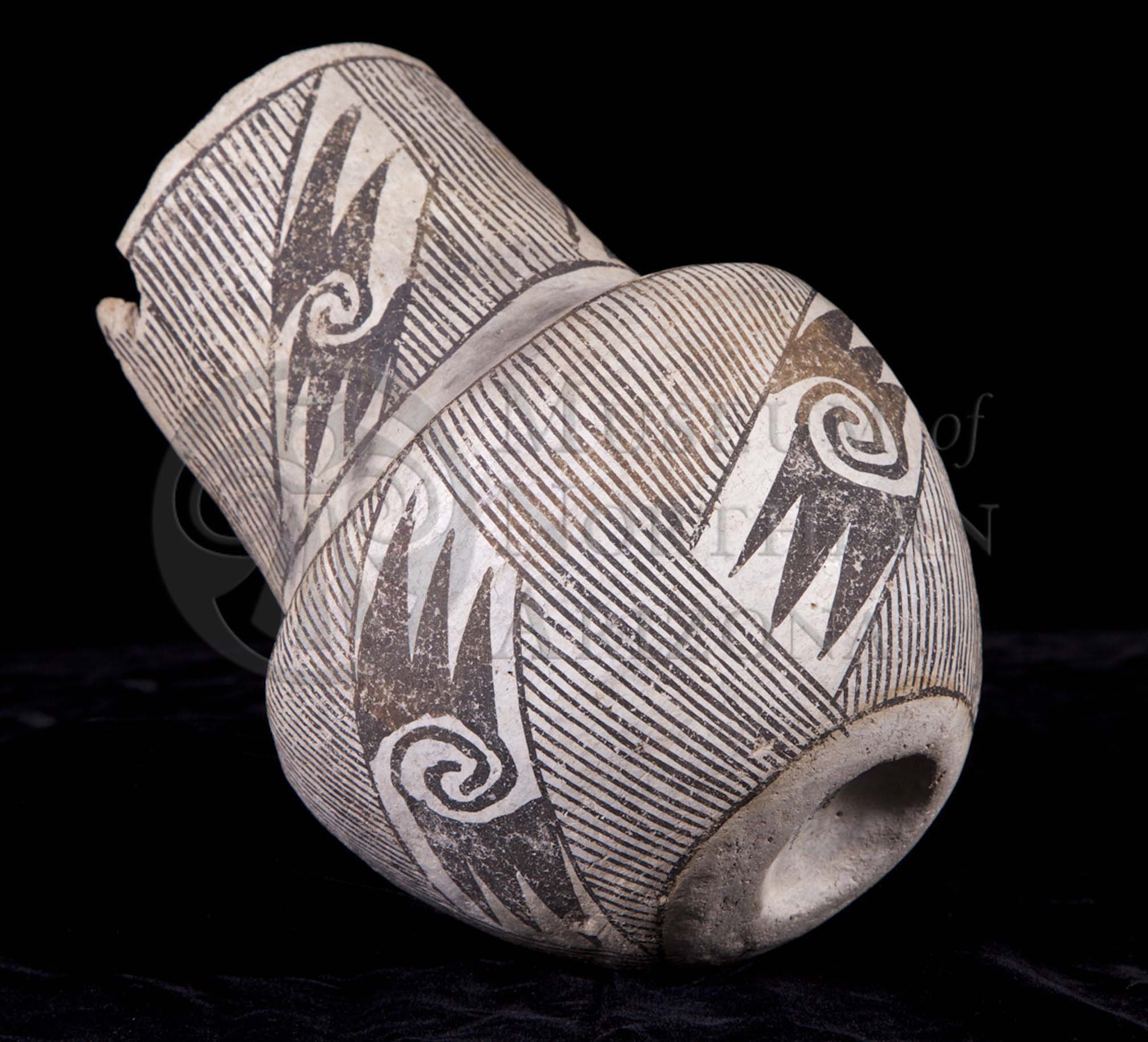
Red Mesa Black-on-white jar from the Museum of Northern Arizona collections. Click the image to open the Red Mesa Black-on-white gallery.
Red Mesa Black-on-white is a type of Cibola White Ware with a fair amount of design variability. The rims of these vessels, however, are invariably painted black.
Archaeological Culture: Ancestral Puebloan
Date Range: A.D. 900-1050.
Construction: By coiling.
Firing: In a neutral to reducing atmosphere.
Core Color: White.
Carbon Streak: Occasional.
Temper: Combination of sherd and sand; occasionally sherd only.
Surface Finish: Thinly slipped and unevenly polished; often having a chalky feel.
Surface Color: Buff 1 to Buff 2.
Forms: Bowls and jars, pitchers, ladles, effigies.
Vessel Thickness: 4.8 to 7.2 mm; average 5.4 mm (bowls); 4 to 7.2 mm; average 5.4 mm (jars).
Decoration:
- Paint: Black to dark brown mineral paint.
- Pigments: Iron-based.
- Design: Lines are of medium width (2-4 mm). Motifs include chevrons; solid triangles with pendant dots; scrolls, checkerboard; squiggle (wavy line) hatching, widely spaced, and vertical to oblique (diagonal); parallel hatch panel dividers; scallop-edged triangles; and nests of fine-line squares. The designs are often banded and the overall effect is often very busy. Rims are painted black.
Comparisons: Design range overlaps with Wepo and Black Mesa Black-on-white in the Kayenta area (organic paint, light paste, sand temper) and Holbrook A Black-on-white in the Little Colorado area (organic paint, dark paste, sherd temper). Red Mesa designs tend to have thinner lines and more open space than those of Puerco Black-on-white.
Compiled from the following sources:
Hays-Gilpin, Kelly and Eric van Hartseveldt. (1998) Prehistoric Ceramics of the Puerco Valley: The 1995 Chambers-Sanders Trust Land Ceramic Conference. Museum of Northern Arizona Ceramic Series, No.7. Flagstaff, Arizona.
Compiled by:
April Peters, Northern Arizona University Anthropology Laboratories.
